
As museums work to become more diverse, equitable, accessible, and inclusive, one community is often left out of the discourse: people over the age of fifty-five. This may be because they already appear to be well-represented. After all, many of our visitors, volunteers, and board members are older people. So, museum professionals might be thinking, shouldn’t we focus on listening to voices and viewpoints that aren’t typically heard within our institutions?
The answer, it turns out, is trickier than we might imagine. Older people, whether visible in museums or not, are still subject to ageism—society’s tendency to exclude, negate, and discount their potential. The World Health Organization has identified this as an urgent public health and social issue, with impacts including job discrimination, economic hardship, and mental and physical health decline that can lead to early mortality. These negative consequences are particularly amplified for women and for the Black, Latinx, and LGBTQ+ communities. And it is not only older people who suffer in the process—ageism also hurts the communities and organizations that underestimate their elders’ accumulated wisdom, which they could stand to benefit from immensely.
In short, ageism is a social justice issue, and museums aren’t immune to the problem. In fact, by virtue of their reach, resources, and commitment to DEAI, it is an issue that many museums are poised to address.
Identifying these opportunities to tackle ageism has been the goal of the AAM/Aroha Creative Aging project since it began in 2018. The project provides museums with the means to offer educational arts-focused programs that encourage the skill-building, community participation, and creative endeavors which help older people resist the forces of ageism. To date, the resulting programs have been popular, with high demand, long waitlists, and positive outcomes that extend well beyond the timespan of the programs.
Skip over related stories to continue reading articleIn the middle of this progress, of course, COVID-19 hit, and the participating museums had to pivot to online creative aging programming. To help ease the transition, Aroha offered a series of online training sessions for museum educators at twenty of its partner museums. Meeting on Zoom over a period of six weeks, we shared our experiences and developed more tools to help museums benefit older audiences. During these workshops, Toya Northington, Community Outreach Manager at the Speed Art Museum in Louisville, Kentucky, delivered an inspiring presentation on creative aging and ageism through the lens of DEAI. This blog post draws from her remarks and our subsequent conversations.
—Marjorie Schwarzer
All of us have blind spots. Sometimes when we’re connected with people or entities, we can’t see faults in them. So, I’m going to offer some stories to help illustrate how this might show up in our institutions and help us create new memories that strengthen all of us. I’m going to start by telling you a little bit about myself, and then I’m going to talk about what’s been happening at the Speed Museum. I’ll conclude with some lessons I’ve learned about the intersection between creative aging and diversity, accessibility, equity, and inclusion (DEAI).
My personal mission is to rebuild pathways in order to restore and liberate individuals, communities, and systems through artistic expression. I know those are big goals for artmaking, so let me tell you how I came to them. I’m an only child. I was raised in a single-parent home by my mother. She has schizophrenia. Usually when I say this, people’s eyes get big. They look up. Their chests tense, and they envision homeless people and mass shooters. But never would they ever think of the loving, caring mother that I have. They just don’t have any relationship to someone who has that condition. Part of this is a systemic problem in the mental health system. High numbers of the people diagnosed with schizophrenia are African American, and because of biases and prejudices, this brain disorder just doesn’t have advocacy.
My mother wanted me to have tools for resilience. She knew that as a Black woman, I was going to encounter sexism and racism. I would also carry the stigma of my mother’s brain disorder. So, she wanted me to be prepared. Her tools of choice? Education, art, journaling, and meditation.
The art stuck with me. It’s how I make sense of the world. I’ve understood its power to help me move through the world. But I hadn’t thought about working in an art institution. To me, these are predominately white spaces. Then I thought, “Maybe I can forward my personal mission of restoring and liberating individuals, communities, and systems through artistic expression by building platforms for other peoples’ voices that had largely been unheard.” And this is what I do in my job as Community Outreach Manager at the Speed Museum.
So now let me tell you about the Speed’s Our Life, Our Stories workshops, offered through our program Community Connections. For this series, the Speed partnered with the Genesis Arts Senior Enrichment Group and Arts Reach Jewelry Making Studio, two groups with roots in West Louisville and Smoketown. The participants selected photographs that reminded them of home, their upbringing, and their neighborhoods, and created new artworks with them. The main idea here was that museums could regenerate the power of old memories into new memories that are equally powerful. To show you how we did that in a surprising way, I’m going to talk about two of our participants. They are sisters: one is Ms. Alfornia and the other is Ms. Nita.
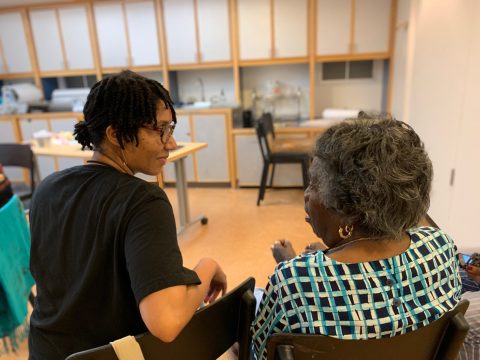
On the first day of our workshop, Ms. Alfornia leaned over and said, “Ms. Toya, I enjoyed my time here, today. I mean, this is really nice. But you know, I’m busy, so, I won’t be coming back. But I wanted to let you know it’s really nice what you’re doing here.” I said, “Oh, Ms. Alfornia, I appreciate you coming. I understand you’re busy but if you have some time, any free time that comes up, just come by and see us. We’d love to have you when you can. And let me tell you, that is not how our programs work. We ask you to sign up for this eight-week commitment. We want you to come every week, and if you don’t come, it messes things up.” I knew in that moment that it would be important to acknowledge the needs of people who are new to our museum and help them feel comfortable with us.
As the workshop continued, I walked over to Ms. Nita, impressed that she was seriously into her work. Ms. Nita looked up and said, “Oh, Ms. Toya. This is Mr. Glen.” I said, “Oh, who’s Mr. Glen?” She said, with shimmering eyes, “That’s Ms. Alfornia’s and my father. He raised us and our seven siblings all by himself. He was such a great man. He worked in the church. He was active in the community and he taught softball. You would have just loved him. He was wonderful.” Both sisters ended up coming back for more workshops, a testament to the power of listening and allowing for connections.
Things really came together at the last workshop, when Ms. Nita came over to me and said, “Toya, I’ve got a surprise.” I like surprises. I didn’t know who the surprise was for, but I was excited. Ms. Nita went on, “This morning our nephew came into town and surprised Ms. Alfornia for her birthday. And she doesn’t know, but our sisters are in town and they’re going to surprise her.” I didn’t think anything of it, but later I looked up at the door, and these ladies were standing there. And I thought, “Oh. This is the surprise. They are all joining us for Community Connections.” They stayed with us the whole day, ate lunch, and told stories about Mr. Glen.
It didn’t stop there. The final part of our workshop was an exhibition of everyone’s work, and it too became a family affair. Ms. Alfornia’s son came to deliver her flowers. And then, I got an email from Ms. Nita. It said, “I got this great idea for Christmas presents.” You see, her daughter lives in Japan and she couldn’t come to the exhibit. But, she said, “You know what? I can put a picture of all of us on a mug, and I can give it to her.” Not only did her daughter get this mug, but the whole family got the mug. And not only did the whole family get the mug, but they gave me a mug as well.
While it was fun, something deeper was happening that totally transformed my thinking. When people feel comfortable and heard, they will tell you what’s on their minds. So, let me tell you about one of the things they told me.
Part of my role at the museum is to bring in new members and get people engaged who had previously been disconnected. So, during one workshop, I announced that the Speed has a membership program for anyone who qualifies for government assistance. Ms. Nita raised her hand and said, “Excuse me, Ms. Toya. Are you implying that we are old and poor?” I laughed and then I said, “Uh-oh. We’ve messed up here. Obviously, you are insulted.” This literally came out my mouth—I’m pretty straight with my participants. I said, “No, I didn’t mean it in that way, but I understand why you took it that way. What’s implied is that ‘this is a white institution and we’ve got some memberships for these old, poor, Black people.’ I get it. I understand. No, that wasn’t my intention. I do understand why you feel that way. But really, I just want people to be able to take advantage of this program if you feel the need and you want a membership, but it’s not quite in your budget.” I fumbled through that one, but I knew I was going to have to go back to the drawing board.
Now, we say it differently. We say, “We have a membership program. If cost is a barrier to you, we’d like you to sign up for a Speed for All membership.” It’s a subtle shift that takes it from being a deficit—“If you don’t have any money, we’re going to give you this membership”—to, “Hey, we have this for you that we’d like you to have. It’s a gift. We’re offering it to you if you’d like to take advantage of it.” And since the beginning, we have never required any kind of proof to show you’re at a certain income level. We take you at your word. Nobody wants to feel stereotyped. Nobody. So, this made it more equitable in language and in practice.
What’s interesting is that for Our Life, Our Stories we actively recruited in the African American community. Yet our final public workshop series was advertised more traditionally through our website and email blasts, and we received majority white participation, with only five African Americans out of twenty-two participants. It was a wonderful group, but we knew some voices were missing. As art institutions, when we talk about visitors, we know the majority are white and female. There’s nothing wrong with acknowledging that. That’s our community, generally speaking. But some communities are different. They might be predominately African American, with no other diversity represented. So you have to be conscious of who you want to bring into the space. We talk a lot in our museum about DEAI work. Really, that is asking: who is at this table and who is missing? And then, when we’re making space for different communities, how do we make sure that they’re heard and seen?
So what do you do when your participants don’t reflect the diversity you’d like to see in your programs? You work with what you’ve got. If I didn’t have diversity in the classroom, I would need to put it in my curriculum. I went to Kim Spence, the Speed Art Museum’s Curator of Works on Paper, and said, “This is a Community Connections program. I’m supposed to amplify the voices of people who have stories that were untold.”
Kim helped me put together a list of little-known African Americans in Kentucky, like the Civil Rights activist Ms. Alberta Jones, the first African American woman to be admitted into the bar in Kentucky. In the resulting program, she presented to participants on the contributions of these little-known people, and they all picked one to turn into an iconic figure. It was inspired by Andy Warhol, because he took things that are overlooked and ignored and made them iconic. Representation matters. Why does it matter? Because institutions have a responsibility to tell those stories.
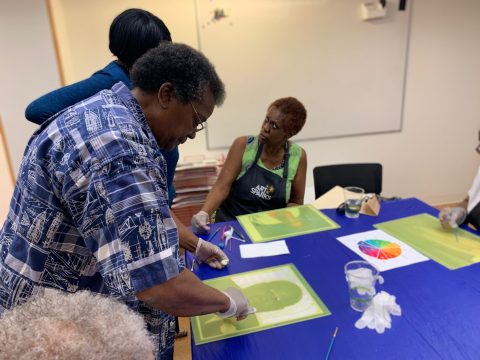
So, how do we grow from here? Here are some of my takeaways for doing creative aging programs that honor our elders’ experiences as part of a commitment to DEAI:
- Language is important. It’s how people feel safe. It’s how people feel welcome and included. It’s how people know that they’re seen. The rules of societies are governed from the perspective of white, Western, male culture. That’s a narrow view. When you think about other groups, you know that this language comes from one specific value system. And so, what we want to do is find more inclusive language that really speaks to the different values, identities, and perspectives of different people. It’s a constant process. Even people who try to be very conscientious about language need to check and correct ourselves with the language we use. It goes back to some of our stereotypes about older people. They said to me, “Don’t call me a senior. We’re mature adults and that’s how we should be looked at.” And so, you need to let people tell you which language to use. They’ll tell you their pronouns, and they’ll tell you how they want to be addressed.
- You have to think about intersectionality. Even if it’s a program targeted to older people and I can check the box and say, “Everyone here is fifty-five and older,” who is at this table? Are they fifty-five and over and Latinx? Are they African American? Are they differently abled? Who is missing from the table? And don’t just think about what people need from the table. Think about what they bring to the table.
- Diversity does not happen naturally. Just because I’m African American and I say, “Hey, I want African Americans to come,” it does not happen that way. And vice versa for anyone that has an identity from any marginalized group. You have to build trust, usually with trusted partners, and you have to continue those relationships.
- We need to be willing to sit down and listen to people. Because when you’ve been marginalized, you may be ashamed to admit you don’t have something. Will the Black and Brown people who we want to attend our programs feel comfortable admitting to us if they don’t have access to technology or feel uncomfortable in our space? You need to think about that.
- Ask people to tell you their stories. When people arrived at our programs, I saw that some of them didn’t know each other. So, day one, I asked them to share their stories. “Why did you come here and what did you want to get out of this?” And we learned that, no matter who they were and where they were coming from, older people were coming for similar reasons. They were starting fresh. They were moving on after retirement. They wanted to have some fun. They were looking for new social networks. The long-term involvement is going to pay off. It just takes some effort to get there. I have found that older people feel an urgent need to pass on the lessons they have learned in their lives.
- Think about intergenerational programming. There is so much potential here. For example, I have found in my work that LGBTQ+ youth really need to connect to older LGBTQ+ community members. Museums have an opportunity right now to transition from youth programs to intergenerational programs. We think of education in terms of what we can do for kids, but we are missing out on the hope that happens when someone is over fifty-five. It’s an optimistic age. You have a lifetime of experience. Think about how you would develop a program for someone who is curious and on the brink of breakthrough. Design creative aging programs for that moment.
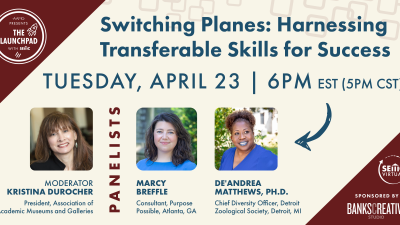




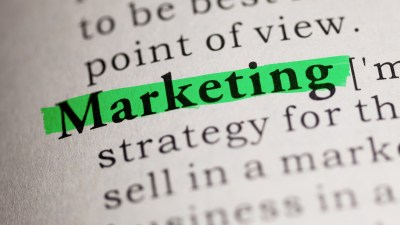
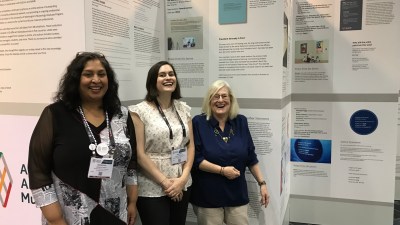
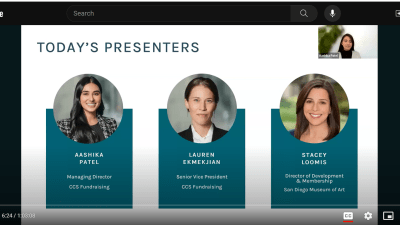
Comments